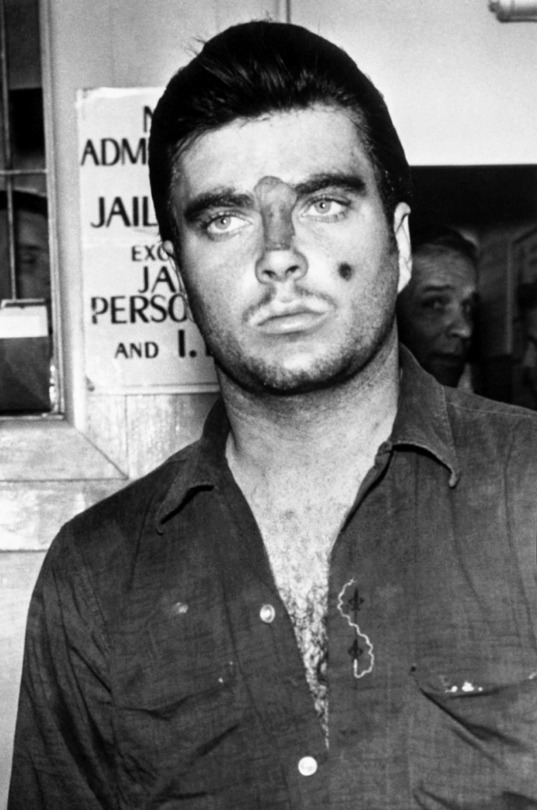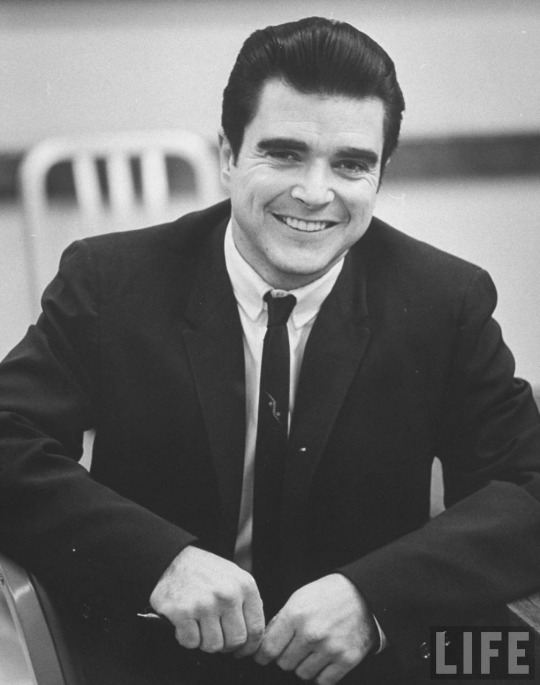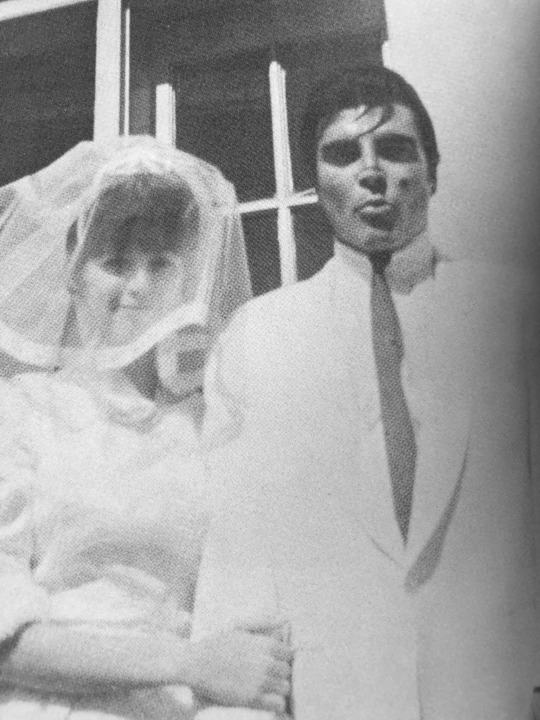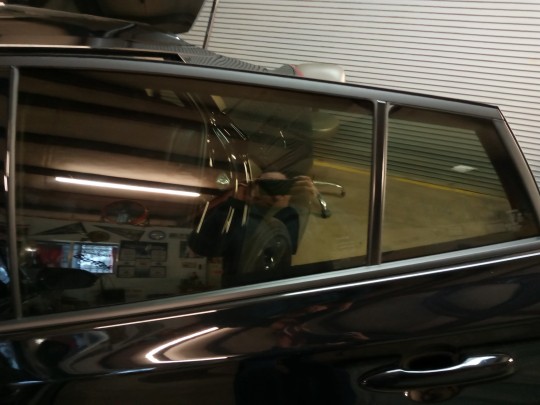#Window Tint Tucson
Text
The Specialists Auto Tint - Your Source for Professional Window Tinting Near Me
For over 30 years, The Specialists Auto Tint has been the trusted choice for window tint near me. We are a family-owned and operated business that is committed to providing our customers with the highest quality services at competitive prices. Our team of award-winning technicians is highly skilled and experienced in all aspects of window tinting, and we use only the most advanced film technology to ensure that your car receives the best possible protection. Whether you're looking to reduce heat and glare, improve privacy, or protect your car's interior from harmful UV rays, we have a window tint solution to meet your needs. We also offer a variety of residential and commercial window tinting services, as well as paint protection film to keep your car looking its best for years to come.

1 note
·
View note
Text

I'm about to upload a weekend vlog to youtube for this weekend but I didn't make an outro. I heard that Ross is selling some Sailor Moon collectables now and I may run out to go look.
I was holding off too on going to the grocery store but I may go for just a couple items (I say that all the time). I just don't want food to rot in my house while I'm out of town. I'm driving to the Phoenix area (sorta) for Thanksgiving because my in-laws are sweet and don't want me to be alone. Its not a difficult drive until I get to like downtown Tucson and Phoenix but I've never driven by my self, always with my husband so I'm a little nervous.
When we were on the east coast and I'd drive to my moms house I knew the gas stations that I could stop at. I'm not terribly familiar with the gas stations on this side of the country. Mainly because I plan on taking my car which holds less gas. I have this anxious fear that I'll one day get a flat or run out of gas on the side of the road in the desert. In my husbands truck we only have to stop for gas once but I don't want to take his truck because I just got the battery in it replaced (and what if they did it wrong!!?!?!?) and he has a dark window tint. We got pulled over the last time because his tint was too dark. That would be something to happen to me. They arrest me because we never fixed the tint. I'ma take my car but I'll have to stop more often and I just got the breaks replaced (WHAT IF THEY DID THAT WRONG TOOO!?!?!)
and then here in a about another 2 weeks going to drive back to the in-laws because we are going to Disneyland. My in-laws bought my ticket as a christmas gift. Again, very nice. I plan to be home alone for christmas but again, they're taking me to Disney. I havent been to Disneyland in almost 10 years. I'm excited and nervous at the same time. I love my in-laws but I have social anxiety and I think they think I'm weird and I have no spousal-back-up. I'm so used to be by my lonesome I can already feel the overstimulation. So pray for me. Theres gonna be a lot of people.
I also ordered me a couple blindboxes to open on christmas so I have something to be surprised about. My husband sent me 2 gifts to open too. If anybody knows of any lucky bags or artist advent calendars I don't already know about, let me know.
7 notes
·
View notes
Text








Charles Schmid: The Pied Piper Of Tucson
)c(
Originally published in LIFE magazine, March 4th, 1966. Written by Don Moser
At dusk in Tucson, as the stark, yellowflared mountains begin to blur against the sky, the golden car slowly cruises Speedway. Smoothly it rolls down the long divided avenue, past the supermarkets, the gas stations and the motels; past the twist joints, the sprawling drivein restaurants. The car slows for an intersection, stops, then pulls away again. The exhaust mutters against the pavement as the young man driving takes the machine swiftly, expertly through the gears. A car pulls even with him; the teenage girls in the front seat laugh, wave and call his mane. The young man glances toward the rearview mirror, turned always so he can look at his own reflection, and he appraises himself.
The face is his own creation; the hair dyed raven black, the skin darkened to a deep tan with pancake makeup, the lips whitened, the whole effect heightened by a mole he has painted on one cheek. But the deepset blue eyes are all his own. Beautiful eyes, the girls say.
Approaching the HiHo, the teenagers’ nightclub, he backs off on the accelerator, then slowly cruises on past Johnie’s Drivein. The cars are beginning to orbit and accumulate in the parking lot—near sharp cars with deepthroated mufflers and Maltesecross decals on the windows. But it’s early yet. Not much going on. The driver shifts up again through the gears, and the golden car slides away along the glitter and gimcrack of Speedway. Smitty keeps looking for the action.
Whether the juries in the two trials decide that Charles Howard Schmid Jr. did or did not brutally murder Alleen Rowe, Gretchen Fritz and Wendy Fritz has from the beginning seemed of almost secondary importance to the people of Tucson. They are not indifferent. But what disturbs them far beyond the question of Smitty’s guilt or innocence are the revelations about Tucson itself that have followed on the disclosure of the crimes. Starting from the bizarre circumstances of the killings and on through the ugly fragments of the plot—which in turn hint at other murders as yet undiscovered, at teenage sex, blackmail, even connections with the Cosa Nostra—they have had to view their city in a new and unpleasant light. The fact is that Charles Schmid—who cannot be dismissed as a freak, an aberrant of no consequence—had for years functioned successfully as a member, even a leader, of the yeastiest stratum of Tucson’s Popular teenage society.
As a high school student Smitty had been, as classmates remember, an outsider—but not that far outside. He was small but he was a fine athlete, and in his last year—1960—he was a state gymnastics champion. His grades were poor, but he was in no trouble to speak of until his senior year, when he was suspended for stealing tools from a welding class.
But Smitty never really left the school. After his suspension he hung around waiting to pick up kids in a succession of sharp cars which he drove fast and well. He haunted all the teenage hangouts along Speedway, including the bowling alleys and the public swimming pool—and he put on spectacular driving exhibitions for girls far younger than he.
At the time of his arrest last November, Charles Schmid was 23 years old. He wore face makeup and dyed his hair. He habitually stuffed three or four inches of old rags and tin cans into the bottoms of his hightopped boots to make himself taller than his fivefootthree and stumble about so awkwardly while walking that some people thought he had wooden feet. He pursed his lips and let his eyelids droop in order to emulate his idol, Elvis Presley. He bragged to girls that he knew 100 ways to make love, and that he ran dope, that he was a Hell’s Angel. He talked about being a rough customer in a fight (he was, though he was rarely in one), and he always carried in his pocket tint bottles of salt and pepper, which he said he used to blind his opponents. He liked to use highfalutin language and had a favorite saying, “I can manifest my neurotical emotions, emancipate an epicureal instinct, and elaborate on my heterosexual tendencies.”
He occasionally shocked even those who thought they knew him well. A friend says that he once saw Smitty tie a string to the tail of his pet cat, swing it around his head and beat it bloody against a wall. Then he turned calmly and asked, “You feel compassion—why?”
Yet even while Smitty tried to create an exalted, heroic image of himself, he had worked on a pitiable one. “He thrived on feeling sorry for himself,” recalls a friend, “and making others feel sorry for him.” At various times Smitty told inmates that he had leukemia and didn’t have long to live. He claimed that he was adopted, that his real name was Angel Rodriguez, that his father was a “bean” (local slang for Mexican, an inferior race in Smitty’s view), and that his mother was a famous lawyer who would have nothing to do with him.
What made Smitty a hero to Tucson’s youth?
Isn’t Tucson—out there in the Golden West, in the grand setting where the skies are not cloudy all day—supposed to be a flowering of the American Dream? One envisions teenagers who drink milk, wear crewcuts, go to bed at half past 9, say “Sir” and “Ma’am,” and like to go fishing with Dad. Part of Tucson is like this—but the city is not yet Utopia. It is glass and chrome and wellweathered stucco; it is also gimcrack, ersatz, and urban sprawl at its worst. Its suburbs stretch for mile after mile—a level sea of bungalows, broken only by mammoth shopping centers, that ultimately peters out among the cholla and saguaro. The city has grown from 85,000 to 300,000 since World War II. Few who live there were born there, and a lot are just passing through. Its superb climate attracts the old and the infirm, many of whom, as one citizen put it, “have come here to retire from their responsibilities to life.” Jobs are hard to find and there is little industry to stabilize employment. (“What do people do in Tucson?” the visitor asks. Answer: “They do each other’s laundry.”)
As for the youngsters, they must compete with the army of semiretired who are willing to take on parttime work for the minimum wage. Schools are beautiful but overcrowded; and at those with split sessions, the kids are on the loose from noon on, or from 6 p.m. till noon the next day. When they get into trouble, Tucson teenagers are capable of getting into trouble in style: a couple of years ago they shocked the city fathers by throwing a series of beerdrinking parties in the desert, attended by scores of kids. The fests were called “boondockers” and if they were no more sinful than any other kid’s drinking parties, they were at least on a magnificent scale. One statistic seems relevant: 50 runaways are reported to the Tucson police department each month.
Of an evening kids have nothing to do wind up on Speedway, looking for action. There is the teenage nightclub (“Pickup Palace,” the kids call it). There are the rock’n’roll beer joints (the owners check ages meticulously, but young girls can enter if they don’t drink; besides, anyone can buy a phony I.D. card for $2.50 around the high schools) where they can Jerk, Swim, and Frug away the evening to the roomshaking electronic blare of Hang on Sloopy, The Pied Piper and a number called The Bo Diddley Rock. At the drivein hamburger and pizza stands their cars circle endlessly, mufflers rumbling, as they check each other over.
Here on Speedway you find Ritchie and Ronny, out of work and bored and with nothing to do. Here you find Debby and Jabron, from the wrong side of the tracks, aimlessly cruising in their battered old car looking for something—anything – to relieve the tedium of their lives, looking for somebody neat. (“Well if the boys look bitchin’ you pull up next to them in your car and you roll down the window and say ‘Hey, how about a dollar for gas?” and if they give you the dollar then maybe you let them take you to Johnie’s for a coke.”) Here you find Gretchen, pretty and rich and with problems, bad problems. Of a Saturday night, all of them cruising the long, bright street that seems endlessly in motion with the young. Smitty’s people.
He had a nice car. He had plenty of money from his parents, who ran a nursing home, and he was always glad to spend it on anyone who’d listen to him. He had a pad of his own where he threw parties and he had impeccable manners. He was always willing to help a friend and he would send flowers to girls who were ill. He was older and more mature than most of his friends. He knew where the action was, and if he wore makeup—well, at least he was different.
Some of the older kids—those who worked, who had something else to do—thought Smitty
was a creep. But to the youngsters—to the bored and the lonely, to the dropout and the delinquent, to the young girls with beehive hairdos and tight pants they didn’t quite fill out, and to the boys with acne and no jobs—to these people, Smitty was a kind of folk hero. Nutty maybe, but at least more dramatic, more theatrical, more interesting than anyone else in their lives: a semiludicrous, sexyeyed pied piper who, stumbling along in his ragstuffed boots, led them up and down Speedway.
On the evening of May 31, 1964, Alleen Rowe prepared to go to bad early. She had to be in class by 6 a.m., and she had an examination the next day. Alleen was a pretty girl of 15, a betterthanaverage student who talked about going to college and becoming an oceanographer. She was also a sensitive child—given to reading romantic novels and taking long walks in the desert at night. Recently she had been going through a period of adolescent melancholia, often talking with her mother, a nurse, about death. She would, she hoped, be some day reincarnated as a cat.
On this evening, dressed in a black bathing suit and thongs, her usual costume around the house, she had watched the Beatles on TV and had tried to teach her mother to dance the Frug. Then she took her bath, washed her hair and came out to kiss her mother good night. Norma Rowe, an attractive, womanly divorcee, was somehow moved by the girl’s clean fragrance and said, “You smell so good—are you wearing perfume?”
“No, Mom,” the girl answered, laughing, “it’s just me.”
A little later Mrs. Rowe looked in on her daughter, found her apparently sleeping peacefully, and then left for her job as a night nurse in a Tucson hospital. She had no premonition of danger, but she had lately been concerned about Alleen’s friendship with a neighbor girl named Mary French.
Mary and Alleen had been spending a good deal of time together, smoking and giggling and talking girl talk in the Rowe backyard. Norma Rowe did not approve. She particularly did not approve of Mary French’s friends, a tall, gangling boy of 19 named John Saunders and another named Charles Schmid. She had seen Smitty racing up and down the street in his car and once, when he came to call on Alleen and found her not at home, he had looked at Norma so menacingly with his “pinpoint eyes” that she had been frightened.
Her daughter, on the other hand, seemed to have mixed feelings about Smitty. “He’s creepy,” she once told her mother, “he just makes me crawl. But he can be nice when he wants to.”
At any rate, later that night—according to Mary French’s sworn testimony—three friends arrived at Alleen Rowe’s house: Smitty, Mary French and Saunders. Smitty had frequently talked with Mary French about killing the Rowe girl by hitting her over the head with a rock. Mary French tapped on Alleen’s window and asked her to come out and drink beer with them. Wearing a shift over her bathing suit, she came willingly enough.
Schmid’s accomplices were strange and pitiable creatures. Each of them was afraid of Smitty, yet each was drawn to him. As a baby, John Saunders had been so afflicted with allergies that scabs encrusted his entire body. To keep him from scratching himself his parents had tied his hands and feet to the crib each night, and when eventually he was cured he was so conditioned that he could not go to sleep without being bound hand and foot.
Later, a scrawny boy with poor eyesight (“Just a skinny little body with a big head on it”), he was taunted and bullied by larger children; in turn he bullied those who were smaller. He also suffered badly from asthma and he had few friends. In high school he was a poor student and constantly in minor trouble.
Mary French, 19, was—to put it straight—a frump. Her face, which might have been pretty, seemed somehow lumpy, her body shapeless. She was not dull but she was always a poor student, and she finally had simply stopped going to high school. She was, a friend remembers, “fantastically in love with Smitty. She just sat home and waited while he went out with other girls.”
Now, with Smitty at the wheel, the four teenagers headed for the desert, which begins out Golf Links Road. It is spooky country, dry and empty, the yellow sand clotted with cholla and mesquite and stunted, strangely green palo verde trees, and the great humanoid saguaro that hulk against the sky. Out there at night you can hear the yip and kiyi of coyotes, the piercing screams of wild creatures—cats, perhaps.
According to Mary French, they got out of the car and walked down into a wash, where they sat on the sand and talked for a while, the four of them. Schmid and Mary then started back to the car. Before they got there, they heard a cry and Schmid turned back toward the wash.
Mary went on to the car and sat in it alone. After 45 minutes, Saunders appeared and said Smitty wanted her to come back down. She refused, and Saunders went away. Five or 10 minutes later, Smitty showed up. “He got into the car,” says Mary, “and he said ‘We killed her. I love you very much.’ He kissed me. He was breathing real hard and seemed excited.” Then Schmid got a shovel from the trunk of the car and they returned to the wash. “She was lying on her back and there was blood on her face and head,” Mary French testified. Then the three of them dug a shallow grave and put the body in it and covered it up. Afterwards, they wiped Schmid’s car clean of Alleen’s fingerprints.
More than a year passed. Norma Rowe had reported her daughter missing and the police searched for her—after a fashion. At Mrs. Rowe’s insistence they picked up Schmid, but they had no reason to hold him. The police, in fact, assumed that Alleen was just one more of Tucson’s runaways.
Norma Rowe, however, had become convinced that Alleen had been killed by Schmid, although she left her kitchen light on every night just in case Alleen did come home. She badgered the police and she badgered the sheriff until the authorities began to dismiss her as a crank. She began to imagine a highlevel conspiracy against her. She wrote the state attorney general, the FBI, the U.S. Department of health, Education and Welfare. She even contacted a New Jersey mystic, who said she could see Alleen’s body out in the desert under a big tree.
Ultimately Norma Rowe started her own investigation, questioning Alleen’s friends, poking around, dictating her findings to a tape recorder; she even tailed Smitty at night, following him in her car, scared stiff that he might spot her.
Schmid, during this time, acquired a little house of his own. There he held frequent parties, where people sat around amid his stacks of Playboy magazines, playing Elvis Presley records and drinking beer.
He read Jules Feiffer’s novel, Harry, the Rat with Women, and said that his ambition was to be like Harry and have a girl commit suicide over him. Once, according to a friend, he went to see a minister, who gave him a Bible and told him to read the first three chapters of John. Instead Schmid tore the pages out and burned them in the street. “Religion is a farce,” he announced. He started an upholstery business with some friends, called himself “founder and president,” but then failed to put up the money he’d promised and the venture was shortlived.
He decided he liked blondes best, and took to dyeing the hair of various teenage girls he went around with. He went out and bought two imitation diamond rings for about $13 apiece and then engaged himself, on the same day, both to Mary French and to a 15yearold girl named Kathy Morath. His plan, he confided to a friend, was to put each of the girls to work and have them deposit their salaries in a bank account held jointly with him. Mary French did indeed go to work in the convalescent home Smitty’s parents operated. When their bank account was fat enough, Smitty withdrew the money and bought a tape recorder.
By this time Smitty also had a girl from a higher social stratum than he usually was involved with. She was Gretchen Fritz, daughter of a prominent Tucson heart surgeon. Gretchen was a pretty, thin, nervous girl of 17 with a knack for trouble. A teacher described her as “erratic, subversive, a psychopathic liar.”
At the horsy private school she attended for a time she was a misfit. She not only didn’t care about horses, but she shocked her classmates by telling them they were foolish for going out with boys without getting paid for it. Once she even committed the unpardonable social sin of turning up at a formal dance accompanied by boys wearing what was described as beatnik dress. She cut classes, she was suspected of stealing and when, in the summer before her senior year, she got into trouble with juvenile authorities for her role in an attempted theft at a liquor store, the headmaster suggested she not return and then recommended she get psychiatric treatment.
Charles Schmid saw Gretchen for the first time at a public swimming pool in the summer of 1964. He met her by the simple expedient of following her home, knocking on the door and, when she answered, saying, “Don’t I know you?” They talked for an hour. Thus began a fierce and stormy relationship. A good deal of what authorities know of the development of this relationship comes from the statements of a spindly scarecrow of a young man who wears pipestem trousers and Beatle boot: Richard Bruns. At the time Smitty was becoming involved with Gretchen, Bruns was 18 years old. He had served two terms in the reformatory at Fort Grant. He had been in and out of trouble his whole life, had never fit in anywhere. Yet, although he never went beyond the tenth grade in school and his credibility on many counts is suspect, he is clearly intelligent and even sensitive. He was, for a time, Smitty’s closest friend and confidant, and he is today one of the mainstays of the state’s case against Smitty. His story:
“He and Gretchen were always fighting,” says Bruns. “She didn’t want him to drink or go out with the guys or go out with other girls. She wanted him to stay home, call her on the phone, be punctual. First she would get suspicious of him, then he’d get suspicious of her. They were made for each other.”
Their mutual jealousy led to sharp and continual arguments. Once she infuriated him by throwing a bottle of shoe polish on his car. Another time she was driving past Smitty’s house and saw him there with some other girls. She jumped out of her car and began screaming. Smitty took off into the house, out the back and climbed a tree in his backyard.
His feelings for her were an odd mixture of hate and adoration. He said he was madly in love with her, but he called her a whore. She would let Smitty in her bedroom window at night. Yet he wrote an anonymous letter to the Tucson Health Department accusing her of having venereal disease and spreading it about town. But Smitty also went to enormous lengths to impress Gretchen, once shooting holes through the windows of his car and telling her that thugs, from whom he was protecting her, had fired at him. So Bruns described the relationship.
On the evening of Aug. 16, 1965, Gretchen Fritz left the house with her little sister Wendy, a friendly, lively 13yearold, to go to a drivein movie. Neither girl ever came home again. Gretchen’s father, like Alleen Rowe’s mother, felt sure that Charles Schmid had something to do with his daughters’ disappearance, and eventually he hired Bill Heilig, a private detective, to handle the case. One of Heilig’s men soon found Gretchen’s red compact car parked behind a motel, but the police continued to assume that the girls had joined the ranks of Tucson’s runaways.
About a week after Gretchen disappeared, Bruns was at Smitty’s house. “We were sitting in the living room,” Bruns recalls. “He was sitting on the sofa and I was in the chair by the window and we got on the subject of Gretchen. He said, ‘You know I killed her?’ I said I didn’t, and he said ‘You know where?’ I said no. He said, ‘I did it here in the living room. First I killed Gretchen, then Wendy was still going “huh, huh, huh,” so I ... [Here Bruns showed how Smitty made a garroting gesture.] Then I took the bodies and I put them in the trunk of the car. I put the bodies in the most obvious place I could think of because I just didn’t care anymore. Then I ditched the car and wiped it clean.’”
Bruns was not particularly upset by Smitty’s story. Months before, Smitty had told him of the murder of Alleen Rowe, and nothing had come of that. So he was not certain Smitty was telling the truth about the Fritz girls. Besides, Bruns detested Gretchen himself. But what happened next, still according to Bruns’s story, did shake him up.
One night not long after, a couple of toughlooking characters, wearing sharp suits and smoking cigars, came by with Smitty and picked up Bruns. Smitty said they were Mafia, and that someone had hired them to look for Gretchen. Smitty and Bruns were taken to an apartment where several men were present whom Smitty later claimed to have recognized as local Cosa Nostra figures.
They wanted to know what had happened to the girls. They made no threats, but the message, Bruns remembers, came across loud and clear. These were no streetcorner punks: these were the real boys. In spite of the intimidating company, Schmid lost none of his insouciance. He said he didn’t know where Gretchen was, but if she turned up hurt he wanted these men to help him get whoever was responsible. He added that she might have gone to California.
By the time Smitty and Bruns got back to Smitty’s house, they were both a little shaky. Later that night, says Bruns, Smitty did the most unlikely thing imaginable: he called the FBI. First he tried the Tucson office and couldn’t raise anyone. Then he called Phoenix and couldn’t get an agent there either. Finally he put in a persontoperson call to J. Edgar Hoover in Washington. He didn’t get Hoover, of course, but he got someone and told him that the Mafia was harassing him over the disappearance of a girl. The FBI promised to have someone in touch with him soon.
Bruns was scared and said so. It occurred to him now that if Smitty really had killed the Fritz girls and left their bodies in an obvious place, they were in very bad trouble indeed—with the Mafia on one hand and the FBI on the other. “Let’s go bury them,” Bruns said.
“Smitty stole the keys to his old man’s station wagon,” says Bruns, “and then we got a flat shovel—the only one we could find. We went to Johnie’s and got a hamburger, and then we drove out to the old drinking spot [in the desert]—that’s what Smitty meant when he said the most obvious place. It’s where we used to drink beer and make out with girls.
“So we parked the car and got the shovel and walked down there, and we couldn’t find anything. Then Smitty said, ‘Wait, I smell something.’ We went in opposite directions looking, and then I heard Smitty say, ‘Come here.’ I found him kneeling over Gretchen. There was a white rag tied around her legs. Her blouse was pulled up and she was wearing a white bra and Capris.
“Then he said, ‘Wendy’s up this way.’ I sat there for a minute. Then I followed Smitty to where Wendy was. He’d had the decency to cover her—except for one leg, which was sticking up out of the ground.
“We tried to dig with the flat shovel. We each took turns. He’d dig for a while and then I’d dig for a while, but the ground was hard and we couldn’t get anywhere with that flat shovel. We dug for twenty minutes and finally Smitty said we’d better do something because it’s going to get light. So he grabbed the rag that was around Gretchen’s legs and dragged her down in the wash. It made a noise like dragging a hollow shell. It stunk like hell. Then Smitty said wipe off her shoes, there might be fingerprints, so I wiped them off with my handkerchief and threw it away.
“We went back to Wendy. Her leg was sticking up with a shoe on it. He said take off her tennis shoe and throw it over there. I did, I threw it. Then he said, ‘Now you’re in this as deep as I am.’” By then, the sisters had been missing for about two weeks.
Early next morning Smitty did see the FBI. Nevertheless—here Bruns’s story grows even wilder—that same day Smitty left for California, accompanied by a couple of Mafia types, to look for Gretchen Fritz. While there, he was picked up by the San Diego police on a complaint the he was impersonating an FBI officer. He was detained briefly, released and returned to Tucson.
But now, it seemed to Richard Bruns, Smitty began acting very strangely. He startled Bruns by saying, “I’ve killed—not three times, but four. Now it’s your turn, Ritchie.” He went berserk in his little house, smashing his fist through a wall, slamming doors, then rushing out into the backyard in nothing but his undershorts, where he ran through the night screaming, “God is going to punish me!” He also decided, suddenly, to get married—to a 15yearold girl who was a stranger to most of his friends.
If Smitty seemed to Bruns to be losing his grip, Ritchie Bruns himself was not in much better shape. His particular quirk revolved around Kathy Morath, the thin, pretty, 16yearold daughter of a Tucson postman. Kathy had once been attracted to Smitty. He had given her one of his two cutglass engagement rings. But Smitty never really took her seriously, and one day, in a fit of pique and jealousy, she threw the ring back in his face. Ritchie Bruns comforted her and then started dating her himself. He was soon utterly and irrevocably smitten with goofy adoration.
Kathy accepted Bruns as a suitor, but halfheartedly. She thought him weird (oddly enough, she did not think Smitty in the least weird) and their romance was shortlived. After she broke up with him last July, Bruns went into a blue funk, a nosedive into romantic melancholy, and then, like some loveswacked Elizabethan poet, he started pouring out his heart to her on paper. He sent her poems, short stories, letters 24 pages long. (“My God, you should have read the stuff,” says her perplexed father. “His letters were so romantic it was like ‘Next week, East Lynne.’” Bruns even began writing a novel dedicated to “My Darling Kathy.”
If Bruns had confined himself to literary catharsis, the murders of the Rowe and Fritz girls might never have been disclosed. But Ritchie went a little bit around the bend. He became obsessed with the notion that Kathy Morath was the next victim on Smitty’s list. Someone had cut the Moraths’ screen door, there had been a prowler around her house, and Bruns was sure that it was Smitty. (Kathy and her father, meantime, were sure it was Bruns.)
“I started having this dream,” Bruns says. “It was the same dream every night. Smitty would have Kathy out in the desert and he’d be doing all those things to her, and strangling her, and I’d be running across the desert with a gun in my hand, but I could never get there.”
If Bruns couldn’t save Kathy in his dreams, he could, he figured, stop a walking, breathing Smitty. His scheme for doing so was so wild and so simple that it put the whole Morath family into a state of panic and very nearly landed Bruns in jail.
Bruns undertook to stand guard over Kathy Morath. He kept watch in front of her house, in the alley, and in the street. He patrolled the sidewalk from early in the morning till late at night, seven days a week. If Kathy was home he would be there. If she went out, he would follow her.
Kathy’s father called the police, and when they told Bruns he couldn’t loiter around like that, Bruns fetched his dog and walked the animal up and down the block, hour after hour.
Bruns by now was wallowing in feelings of sacrifice and nobility—all of it unappreciated by Kathy Morath and her parents. At the end of October, he was finally arrested for harassing the Morath family. The judge, facing the obviously woebegone and smitten young man, told Bruns that he wouldn’t be jailed if he’d agree to get out of town until he got over his infatuation.
Bruns agreed and a few days later went to Ohio to stay with his grandmother and try to get a job. It was hopeless. He couldn’t sleep at night, and if he did doze off he had his old nightmare again.
One night he blurted out the whole story to his grandmother in their kitchen. She thought he had had too many beers and didn’t believe him. “I hear beer does strange things to a person,” she said comfortingly. At her words Bruns exploded, knocked over a chair and shouted, “The one time in my life when I need advice and what do I get?” A few minutes later he was on the phone to the Tucson police.
Things happened swiftly. At Bruns’s frantic insistence, the police picked up Kathy Morath and put her in protective custody. They went into the desert and discovered—precisely as Bruns had described them—the grisly, skeletal remains of Gretchen and Wendy Fritz. They started the machinery that resulted in the arrest a week later of John Saunders and Mary French. They found Charles Schmid working in the yard of his little house, his face layered with makeup, his nose covered by a patch of adhesive plaster which he had worn for five months, boasting that his nose was broken in a fight, and his boots packed full of old rags and tin cans. He put up no resistance.
John Saunders and Mary French confessed immediately to their roles in the slaying of Alleen Rowe and were quickly sentenced, Mary French to four to five years, Saunders to life. When Smitty goes on trial for this crime, on March 15, they will be principal witnesses against him.
Meanwhile Ritchie Bruns, the perpetual misfit, waits apprehensively for the end of the Fritz trial, desperately afraid that Schmid will go free. “If he does,” Bruns says glumly, “I’ll be the first one he’ll kill.”
As for Charles Schmid, he has adjusted well to his period of waiting. He is polite and agreeable with all, though at the preliminary hearings he glared menacingly at Ritchie Bruns. Dressed tastefully, tie neatly knotted, hair carefully combed, his face scrubbed clean of makeup, he is a short, compact, darkly handsome young man with a wide, engaging smile and those deepset eyes.
The people of Tucson wait uneasily for what fresh scandal the two trials may develop. Civic leaders publicly cry that a slur has been cast on their community by an isolated crime. High school students have held rallies and written vehement editorials in the school papers, protesting that they all are being judged by the actions of a few oddballs and misfits. But the city reverberates with stories of organized teenage crime and vice, in which Smitty is cast in the role of a minorleague underworld boss. None of these later stories has been substantiated.
One disclosure, however, has most disturbing implications: Smitty’s boasts may have been heard not just by Bruns and his other intimates, but by other teenagers as well. How many—and precisely how much they knew—it remains impossible to say. One authoritative source, however, having listened to the admissions of six high school students, says they unquestionably knew enough so that they should have gone to the police—but were either afraid to talk, or didn’t want to rock the boat. As for Smitty’s friends, the thought of telling the police never entered their minds.
“I didn’t know he killed her,” said one, “and even if I had, I wouldn’t have said anything. I wouldn’t want to be a fink.”
Out in the respectable Tucson suburbs parents have started to crack down on the youngsters
and have declared Speedway hangouts off limits. “I thought my folks were bad before,” laments one grounded 16yearold, “but now they’re just impossible.”
As for the others—Smitty’s people—most don’t care very much. Things are duller without Smitty around, but things have always been dull.
“There’s nothing to do in this town,” says one of his girls, shaking her dyed blond hair. “The only other town I know is Las Vegas and there’s nothing to do there either.” For her, and for her friends, there’s nothing to do in any town.
They are down on Speedway again tonight, cruising, orbiting the driveins, stopping by the joints, where the words of The Bo Diddley Rock cut through the smoke and the electronic dissonance like some macabre reminder of their fallen hero:
All you women stand in line,
And I’ll love you all in an hour’s time.... I got a cobra snake for a necktie,
I got a brandnew house on the roadside Covered with rattlesnake hide,
I got a brandnew chimney made on top, Made out of human skulls.
Come on baby, take a walk with me, And tell me, who do you love? Who do you love? Who do you love? Who do you love?
The Pied Piper of Tucson—Life Magazine March 4, 1966 http://books.google.com/books
#true crime#serial killers#criminal investigations#crime after crime#Charles Schmid#tucson arizona#pied piper#life magazine#Bnw#60’s
6 notes
·
View notes
Text



Hyundai Tucson
Distinctive Window Tinting Sioux Falls can highlight these points to showcase the importance of car window tinting, emphasizing both the practical advantages and aesthetic appeal for your customers in the Sioux Falls area.
#siouxfallswindowtint#iowawindowtint#marshallmnwindowtint#siouxcitywindowtint#minnesotawindowtint#iowacommercialwindowtint#minnesotacommercialwindowtint
0 notes
Link
We are an automotive tinting business located in Tucson, Arizona.
0 notes
Text
Tips About Car Window Tinting
No matter how large or small the job, you possibly can trust us for first-fee service at a worth you may afford. Irrespective of how many home windows you want tinted, or what measurement, you can relaxation assured that we will offer you the very best value in city. • Auto Window Tint -Revolution Automotive Audio specializes in auto window tint in your automobile, it doesn't matter what dimension and shape it may be. Can you Element a Car Your self? All of our technicians are certified in auto glass & window tinting so you may trust them to do the job right every time. Backed by 15 years of expertise, you may belief our staff to get the job done right the first time, so you may keep snug as you cruise. Our friendly and skilled workers has over 10 years of experience with putting in window tinting, guaranteeing that your window tinting will likely be skilled and carried out correctly every time.

We focus on installing premium machine-cut auto window tinting from high-of-the-line materials, utilizing state-of-the artwork gear, and delivering unmatched customer service. Since 1999 Detail King has earned the fame for providing extraordinary customer service to a base of over 60,000 auto detailing companies and car hobbyists in over 50 countries. An applicable glass cleaner is used to wash the glass-sections and automotive windows. Detailed car washing goes past the normal car wash to make a vehicle look spotlessly clear both inside and out of doors. True Blue acquired three more Clean Freak websites in Tucson and Scottsdale. Want more privacy in your car, but do not desire a ticket? If you’re going to upgrade your automobile with window tinting, you might want to consider UV-reflecting film for added protection from the solar. Want to study more about how Exotic Window Tint in Northbrook may help?
Home windows behind the driver, such as the rear side and rear window, can have a 20% minimal gentle transmission or more providing the car has 2 rear view mission mirrors on both sides of the car. Each car should have twin facet mirrors to improve visibility in case you've gotten tinting on the again home windows. The legal guidelines for the side windows and the rear window vary. Whatever your causes, rest assured that when you select Revolution Car Audio to handle your window tinting wants, car detailing near me you’re making the best choice! It may possibly provide privateness, car detailing near me making it laborious for others to see what’s going on inside your automotive. We consider that you won't find a better car window tinting service in Lincoln. They may also apply specialty waxes, polish chrome surfaces, and even apply protective coatings to keep the automobile wanting better for longer.
Relating to window tinting, you won’t find a better deal within the Grand Rapids, car detailing MI space than what we can give you right here at Revolution Automotive Audio. The Professional Carwashing Business Report offers you the hard data you want to achieve success within the automotive care business. In response to our analysis, the typical price of an expert detail within the United States is $160.16. We’ll provide you with a quote on what it can price on your explicit automobile determined by window size and the variety of windows being tinted. Thankfully, knowledgeable window tint installer will know the legal guidelines as properly, and they are legally required to give you a certificate proving that your tinting materials is in compliance with the state law. There is more to starting a business than simply registering it with the state. Nonetheless, if you remove the scratches first with a scratch elimination kit and then polish, you’ll get much more shine.
Find scratch elimination kits at any auto elements retailer Here’s learn how to remove minor scratches your self. Sharpening increases the shine, but it surely doesn’t remove scratches. Available in a wide range of charcoal colors to match your automobile's specifications, LLumar automotive window movie enhances your car's look and will increase your privacy, however extra important, it protects you from the heat and UV rays that accompany the Texas solar. FORT Worth, car detailing near me Texas - The first main carwash show in over 16 months hosted greater than 2,400 attendees. That is especially true when you live in a highly-populated space resembling a major city like Jacksonville. If you live in the Grand Rapids, MI space and are in want of professional window tinting for your car, merely call us at Revolution Automotive Audio. We offer you the very best deals in the realm on all window tint providers, and the outcomes are all the time of the best high quality.
1 note
·
View note
Text
A Window into the Past
NASA - Mars Reconnaissance orbiter (MRO) patch.
Oct. 23, 2017
The layered sedimentary deposits inside the giant canyons of Mars have puzzled scientists for decades. These light toned deposits have fine, horizontal laminations that are unlike the rugged rim rock of the Valles Marineris as seen by NASA's Mars Reconnaisance Orbiter (MRO).
Various ideas for the origin of the layered sediments have suggested lake deposits, wind blown dust and sand, or volcanic materials that erupted after the canyon was formed, and possibly filled with water.
One particular layered deposit, called Ceti Mensa, attracted attention because its deep red color in images collected by the Viking Orbiter mission during the 1970s. Located in west Candor Chasma in the north of the Valles Marineris, Ceti Mensa is an undulating plateau that rises 3 kilometers above the canyon floor and is bounded by steep scarps up to 1.5 kilometers in height. Deep red hues are on the west-facing scarp in particular. The red tint may be due to the presence of crystalline ferric oxide, suggesting that the material may have been exposed to heat or water, or both.
Spectral measurements by the Mars Express OMEGA and MRO CRISM instruments confirm the presence of hydrated sulfate salts, such as gypsum and kieserite . These minerals are important for two reasons. On Earth, they typically form in wet environments, suggesting that the deposits in Ceti Mensa may have formed under water. On Mars, these deposits could be valuable to future Martian colonists as fertilizer for growing crops.
Mars Reconnaissance Orbiter (MRO)
In a view of the colorful west-facing scarp of Ceti Mensa, we see the interior layers of the deposit, giving us a window into the past history of the sediments as they accumulated over time. We also see layers that were previously too small to view, and a surface that is thoroughly fractured, eroded into knobs, and partially covered by young dark sand dunes.
This is a stereo pair with https://www.uahirise.org/ESP_051986_1750
The University of Arizona, Tucson, operates HiRISE, which was built by Ball Aerospace & Technologies Corp., Boulder, Colo. NASA's Jet Propulsion Laboratory, a division of Caltech in Pasadena, California, manages the Mars Reconnaissance Orbiter Project for NASA's Science Mission Directorate, Washington.
Mars Reconnaissance Orbiter (MRO): http://www.nasa.gov/mission_pages/MRO/main/index.html
Images, Text, Credits: NASA/Tony Greicius/JPL-Caltech/Univ. of Arizona.
Best regards, Orbiter.ch
Full article
19 notes
·
View notes
Photo

Hyundai Tucson 2011 Mid Option used with excellent condition. هيونداي توسان ٢٠١١ ميد اوبشن مستخدمة بحالة ممتازة. Installement Start from " 49 BD Monthly " Without Down Payment قسط يبدأ من " ٤٩ دينار ش��ري " بدون مقدم INSTA MOTORS OFFERS: - Nano Ceramic with ONE year warranty. - Registration. - Golden Insurance. - Window Tinting. - Under Seal. مفاجآت انستا موترز : - نانو سيراميك مع ضمان سنة. - تسجيل. - تأمين ذهبي. - عازل حراري. - مانع صدأ. For more information or whatsapp: 34648055 - Basith / Urdu, Hindi, English 36309930 - Anas Follow us on Instagram: @instamotorsbh @instamotorsbh @instamotorsbh We are Selling, Baying, and Exchanging all kind of cars. نبيع ونشتري ونستبدل جميع أنواع السيارات Posted by www.bahrainshowroom.com تم وضع هذا الإعلان بواسطة موقع بحرين شوو روم مجانا https://www.instagram.com/p/B73pTHRBxVz/?igshid=fi695599u7qo
0 notes
Text
Our Professionals are always ready for any Storefront glass repair in Naples
Guardian Hurricane provides replacement services for large glass paneling for windows, storefronts, and large-panel office windows. The firm's commercial products include security glass that is designed to withstand the impact of manual blows, bullets, and even explosive blasts.
The Florida window glass supplier provides glass installation and replacement services in compliance with all local building codes and ordinances. The company has provided window glass solutions to small, medium and large businesses across multiple industry sectors. The firm serves several business sectors including hospitality, retail, automotive, and lifestyle services.
Other commercial glass services include full storefront glass repair emergency board-ups, interior partition glass installations and repairs, glazing & tinting, and decorative glass. The company also provides custom home window replacements and shower door repairs.

According to a spokesperson for Guardian Hurricane, ”As leading glass suppliers and replacement specialists in and around Tucson, we support businesses by providing high-quality glass backed by responsive and industry-leading replacement services. We translate decades of experience in the glass industry to ensure that our glass installations are cost-effective, energy-efficient, and support the visual appeal of a store or office facade."
Uniform construction for all applications assures windows with totally different pressures look an equivalent and can accommodate just about any glass possibility accessible. Insulated glass offers increased energy potency likewise as noise reduction and impact protection. ex gratia Low-E and verity of glass tints offer glorious energy savings and most impact protection. Our merchandise exceed Florida code specifications and area unit tested to each ASTM and Miami-Dade protocols for big and tiny missile impact resistance.
Guardian Hurricane is a glass repair and replacement company with offices in collier, serving locations Naples, Marco Island and nearest Florida Cities. Established in 2000, the company is a family-owned glass supplier focused on supporting the local economy. The firm is a member of the Better Business Bureau and is licensed and bonded with the Arizona Registrar. The company also offers 24-hour emergency repairs for windows. More information is available at http://www.guardianhurricaneprotection.com and over the phone at 2394384732.
Business address:-
NEW SHOWROOM, NOW OPEN | 1410 Pine Ridge Road, Suite 16 Naples, FL 34108
0 notes
Photo

SALE PRICE - Hyundai Tucson 2.0 CRTD Limited Edition 4WD 5dr 2008 - £3650 A Superb Example Of The 4WD Hyundai Tucson Diesel, Finished In Light Blue Metallic With Full Black Leather Interior Trim. A Very Well Presented Example With A Superb Service Record Throughout. Very Good Driving Machine Fitted With Alloy Wheels, Side Steps, Front Nudge Bar, Tinted Glass, Towbar, Roof Rails, Front Foglights, Remote Central Locking, Isofix Seating, Cruise Control, Heated Front Seats, Climate Control, CD Player, Electric Windows, Electric Mirrors & More. An Ideal Tow Vehicle Supplied With A New MOT. Your Part Exchange Is Welcome And We Accept All Methods Of Payment Including All Major Credit And Debit Cards. Finance & Upgraded Warranty Policies & Fantastic Rates Also Available. For Further Details Or To Arrange A Viewing; Please Feel Free To Call Us At Any Time On 01202-517375 Or 01202-529040. https://www.moordowntradecentre.co.uk/listing/hyundai-tucson-2-0-crtd-limited-edition-4wd-5dr-2008/ #hyundai #tuscon #4x4 #offroad #blackleather #tints #tintedglass #mtcpoole (at Moordoown Trade Centre) https://www.instagram.com/p/BspplR8Fprg/?utm_source=ig_tumblr_share&igshid=13jqj22i8dtbv
0 notes
Link
We are an automotive tinting business located in Tucson, Arizona.
0 notes
Photo



Florence Miller Pierce: In the Light
September 5 – September 30, 2014
A survey exhibition of work by Florence Miller Pierce (1918-2007) will open at Charlotte Jackson Fine Art on September 5 and extend to September 30, with an opening reception on Friday, September 5 from 5-7 p.m. at the gallery, which is located at 554 S. Guadalupe in the Railyard Art District.
Light in all its guises and subtleties--bright or fleeting, lustrous or dim, the éclat of a spark or the smolder of a color from the depths—this is the subject matter Florence Miller Pierce has come to be known for in her art. A survey of work from across several decades, In the Light will include numerous permutations of this fascination with light—including works from the late 1960’s through the early 2000’s.
Born in 1918 in Washington, D.C., Miller Pierce’s interest in art began at an early age. She studied with a private tutor, May Ashton, at fifteen. It was Ashton who introduced Miller Pierce to The Phillips Collection, considered the first museum of Modern Art in America. Later she studied at the studio school there. At the tender age of eighteen, Miller Pierce set out for Taos, New Mexico to study art with Emil Bisttram. Influenced by the Transcendentalism, Theosophy, and Kandinsky’s seminal Concerning the Spiritual in Art, Miller Pierce found herself in a heady atmosphere that nevertheless did not stint on physical discipline. Students were expected to maintain the studio, stoke the woodstove, and to work eight hours a day. Miller Pierce, along with her husband Horace Pierce, briefly joined Bisttram and Raymond Jonson’s famous Transcendental Painters Group. Miller Pierce was one of only two women (the other was Agnes Pelton) in the group, and by far the youngest member.
Miller Pierce’s early work was primarily organic geometric forms in paint on canvas. Even in what survives of these early works, with their luminous and light-tinted depths, Miller Pierce’s interest in light can be seen. Later, Miller Pierce went on to work with ink on rice paper and to sculpt in stone and balsa wood. These pieces retain the organic and geometric forms of those early years, and they are infused with a gravity and totemic quality which resonates on a visceral level.
However, the work which Miller Pierce is perhaps best known for her resin pieces—a medium which she discovered by accident. Pouring resin in her studio one day, she spilled a few drops onto a piece of foil. She was fascinated by the play of light within the resin. This discovery led to years of trial and refinement as she continually developed new methods of pouring and shaping resin onto mirrored Plexiglas. Her fascination with geometric forms continued. Many of the resin works from the 1980’s include sculptural forms—triangles, fans, lozenges, circles. She also developed multiple ways to manipulate the surface of the pieces—creating matte or gloss finishes, and smooth, stippled, or even folded surfaces. The elegant white pieces were Miller Pierce’s own favorites—with their quiet and meditative quality and subtle play of light. The color works are like gems in which the brilliant range of tones, from black-blues to cool purples to deep pinks become infused with an almost living luminescence.
There has been a recent resurgence of interest in Miller Pierce’s work. She has been selected for inclusion this summer in the SITE Santa Fe Biennial and in the Western Light, Ecstatic Landscapes exhibition at the Sun Valley Center for the Arts in California. In addition, in 2015, Miller Pierce will be honored with a Survey Exhibition at the Harwood Museum. Miller Pierce’s work has been included in prestigious collections and exhibitions around the world, including The Corcoran, The Albright-Knox, The New Mexico Museum of Fine Arts, The Tucson Museum of Art, The Sasebo Museum in Japan, and The Phillips Collection.
In the Light will offer viewers the opportunity to see a selection of Miller Pierce’s work in juxtaposition. Whether a square window of brilliant color or a luminous white sculptural form—each piece will draw the viewer into the contemplation of light.
#Florence Pierce#Florence Miller Pierce#In The Light#2014#Charlotte Jackson Fine Art#Press Release#Artist News#CJFA#Santa Fe
2 notes
·
View notes






